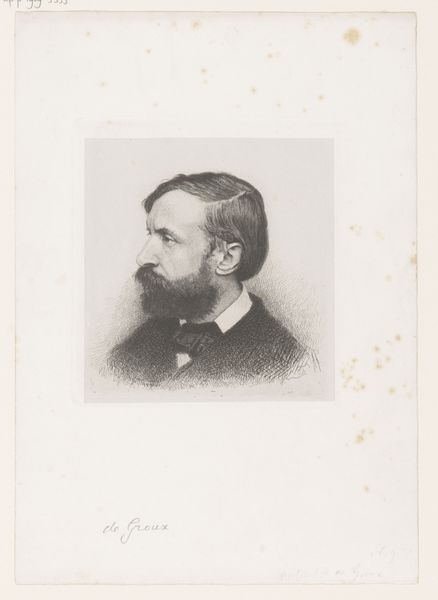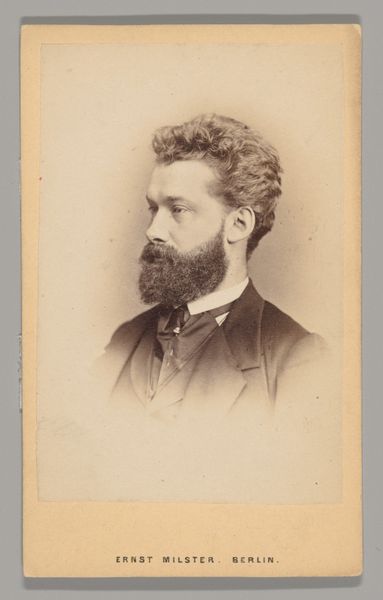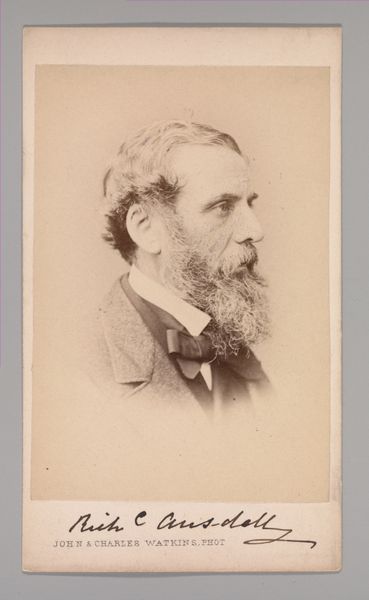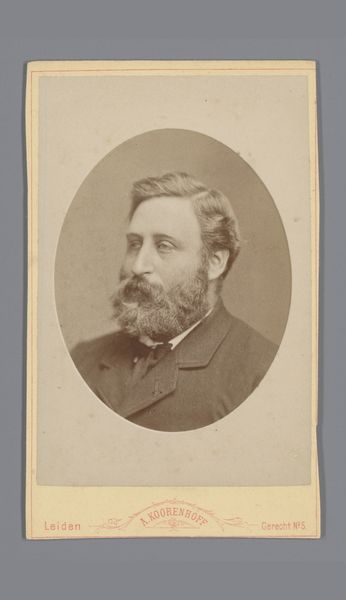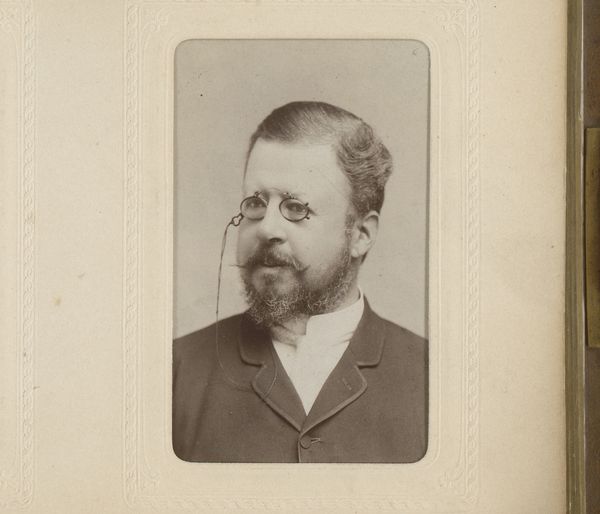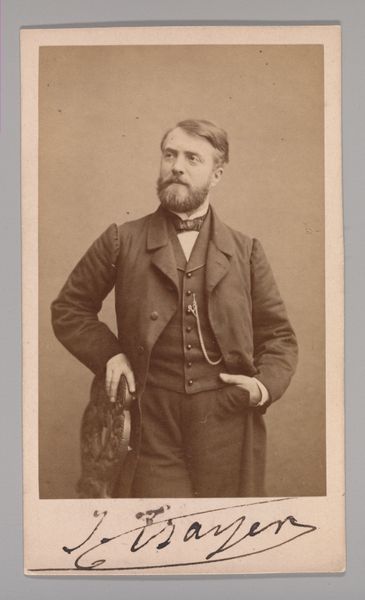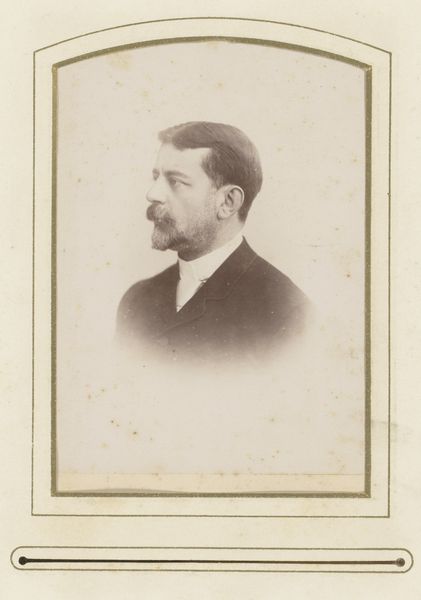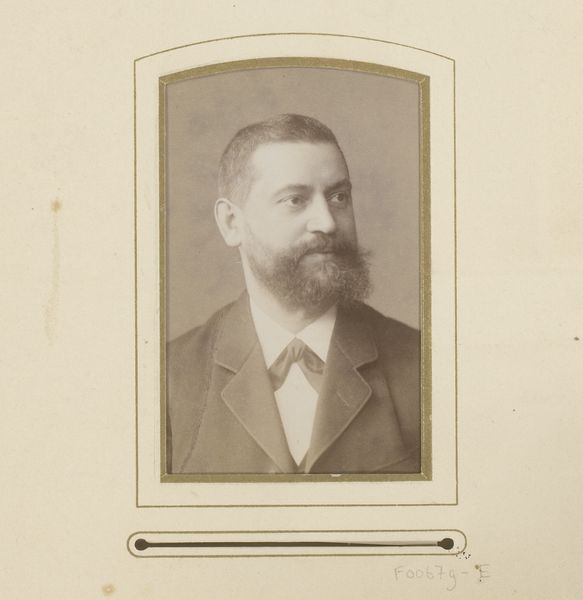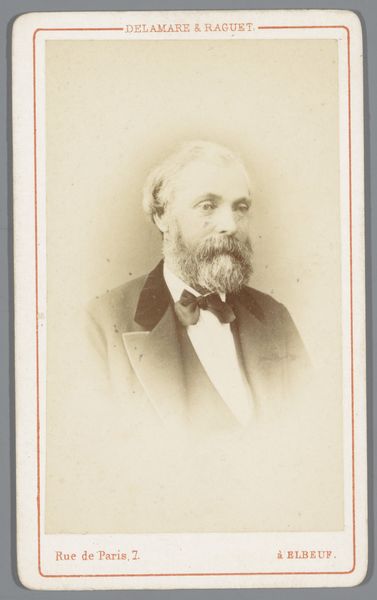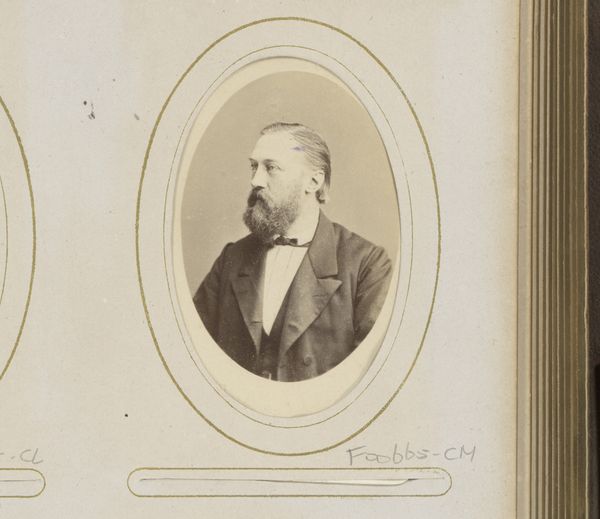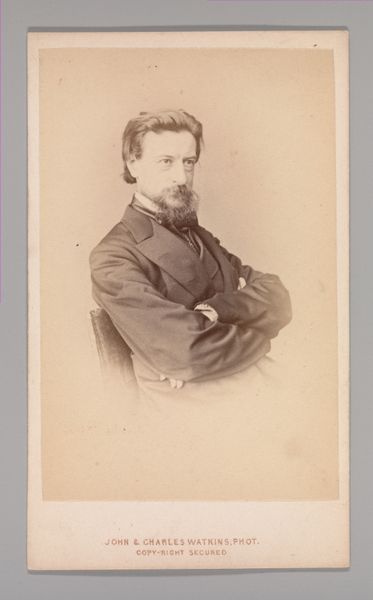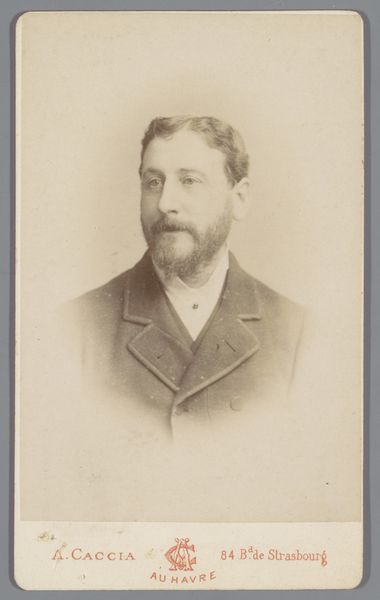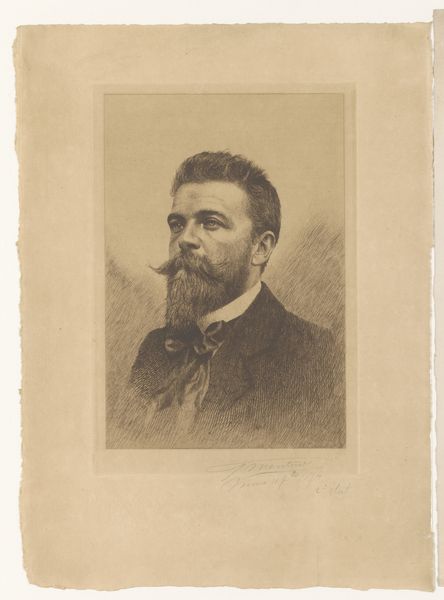![[Benjamin William Leader] by John and Charles Watkins](/_next/image?url=https%3A%2F%2Fd2w8kbdekdi1gv.cloudfront.net%2FeyJidWNrZXQiOiAiYXJ0ZXJhLWltYWdlcy1idWNrZXQiLCAia2V5IjogImFydHdvcmtzL2ZkNDExOTI4LWQ1YWItNGRiMi1iNzQ4LWFkYTU0MWM1NzE3My9mZDQxMTkyOC1kNWFiLTRkYjItYjc0OC1hZGE1NDFjNTcxNzNfZnVsbC5qcGciLCAiZWRpdHMiOiB7InJlc2l6ZSI6IHsid2lkdGgiOiAxOTIwLCAiaGVpZ2h0IjogMTkyMCwgImZpdCI6ICJpbnNpZGUifX19&w=3840&q=75)
print, photography, albumen-print
#
portrait
# print
#
photography
#
men
#
albumen-print
Dimensions: Approx. 10.2 x 6.3 cm (4 x 2 1/2 in.)
Copyright: Public Domain
Curator: There's an air of determined introspection radiating from this photograph. The Metropolitan Museum holds this albumen print, "[Benjamin William Leader]" attributed to John and Charles Watkins, likely dating from the period between 1867 and 1870. What are your initial impressions? Editor: Oh, it's a perfectly presentable Victorian gentleman...but tell me, where was this albumen sourced? What factory produced the paper stock? Was this printed en masse, or individually? All I see is an image carefully calibrated to project status. Curator: I sense a touch of skepticism? It is, indeed, a meticulously constructed image of an esteemed artist. Note the way the light catches the subtle texture of his hair, framing a gaze turned just slightly away...it hints at the creative genius lost in thought. Editor: Lost in the capitalist machine, maybe! Think about the materials involved here. The glass plates, the chemicals for the emulsion, the labor hours developing and printing. Each one an element in a commercial venture to package and sell artists to the aspiring middle classes. Curator: True, photography studios were businesses. But let’s not discount the artistic element of it all. Albumen prints allowed for incredibly sharp details, revealing textures in the subject's beard, capturing a vulnerability in his profile that transcends pure commerce. Editor: Sharp detail achieved through exploitative labor. Women, especially, were employed for the painstaking work of coating and preparing the albumen paper. The finished "art" is but a glittering facade concealing layers of material inequality. Curator: Well, while the era undeniably had its dark corners, this image speaks to something else for me, a reverence for artistic creation and an aspiration for some degree of immortality. Isn’t there also a genuine attempt to communicate Leader’s character, his very essence, to those who never knew him? Editor: Perhaps. I see less transcendence and more...transaction. A carefully fabricated artifact whose worth lies not in some inherent "beauty," but in its commodity status. Knowing how it was *made* – and *who* made it– reshapes the image for me completely. Curator: An insightful—and sobering—counterpoint. Perhaps we both arrive at a more complete understanding of its multifaceted legacy. It serves as a reminder that even within beauty, it's so vital to consider the processes, the means of its production, and also the intentions embedded in the act of artistic capture.
Comments
No comments
Be the first to comment and join the conversation on the ultimate creative platform.
